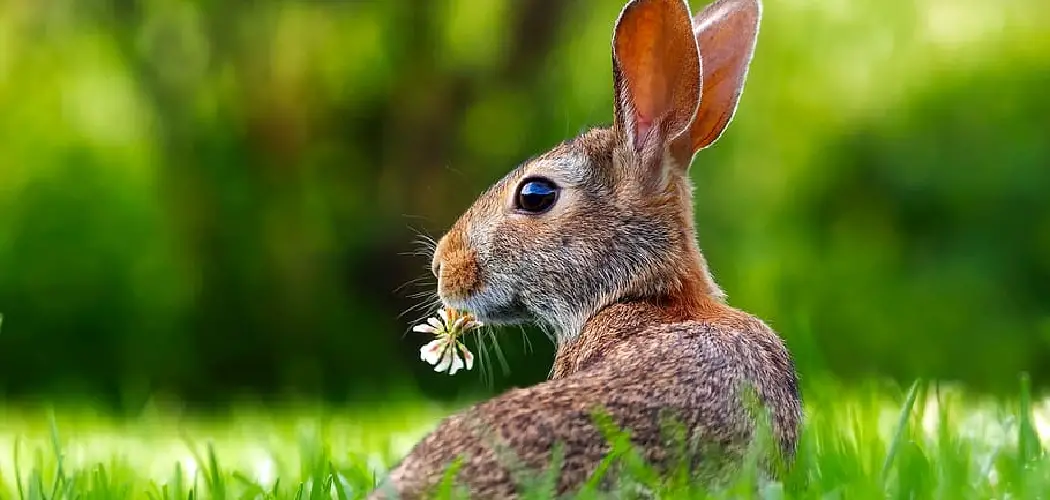Are you noticing your lawn damaged by rabbits? If so, it’s time to take action and repair the damage. Today’s article discusses how to repair your lawn after rabbits have damaged it. If your home is surrounded by lush, green grass that you take pride in maintaining, there’s nothing worse than waking up to discover it has been damaged by wildlife such as rabbits.
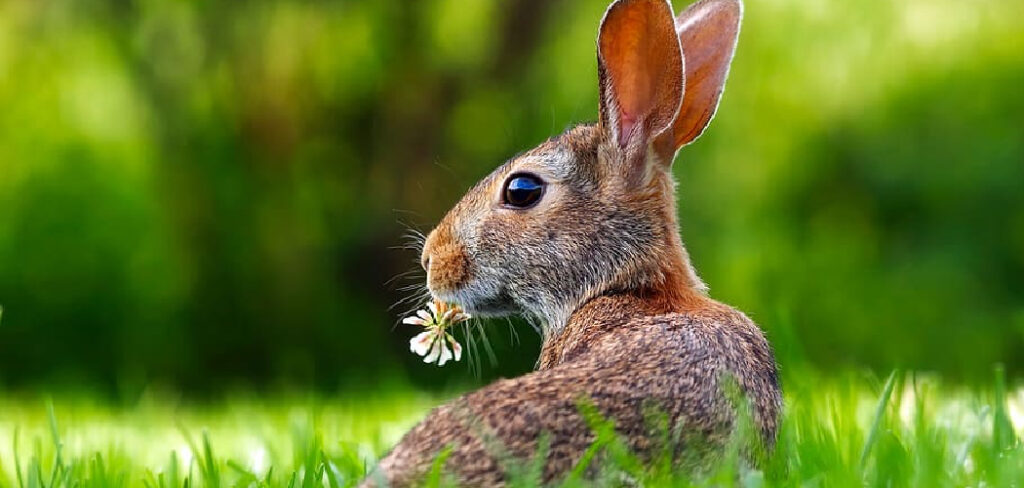
Not only does this leave unsightly patches of dead and discolored grass across the lawn, but it can often be hard to repair without the proper know-how. Fortunately, with a bit of knowledge and the right approach, restoring even severely damaged lawns back to their former glory is possible.
In this blog post, we will look at how to identify damage done by rabbits and provide easy steps on how to repair lawn damaged by rabbits quickly and efficiently!
What Will You Need?
First, you’ll need to collect the necessary items for repairing your lawn:
- Lawn Fertilizer
- Grass seed
- Rake or hoe
- Soil conditioner or compost
Once you’ve gathered the necessary items, you can begin to repair your lawn.
10 Easy Steps on How to Repair Lawn Damaged by Rabbits
Step 1: Identify Rabbit Damage
The first step in repairing your lawn is to identify the areas that rabbits have damaged. Look for parts of the lawn that are discolored or patchy, and check for rabbit droppings. If you find any, then it’s likely that the rabbits have been at work.
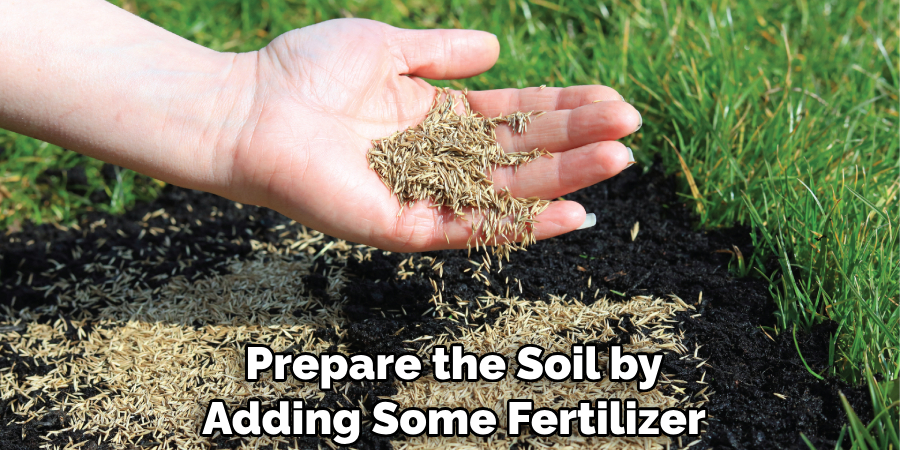
Step 2: Clear the Area
Once you’ve identified the damaged area, it’s time to clear it of any debris or dead grass. Use a rake or hoe to do this effectively. this will help create a clean surface for the repair.
Step 3: Prepare the Soil
Now that the area is clear, prepare the soil for reseeding by adding some fertilizer and soil conditioner or compost. This will help promote the healthy growth of new grass and ensure nutrients reach the roots. Another great tip is to aerate your soil. This will help increase the soil’s oxygen and promote growth.
Step 4: Reseed
Using your chosen grass seed, sprinkle it over the prepared soil until thoroughly covered and press down gently with a rake to ensure good contact with the soil. It’s important not to be overseed as you don’t want the area to be overgrown. Be careful to follow the instructions on the packaging for best results.
Step 5: Water Regularly
Water your newly seeded lawn every day for the first few weeks, and continue to water it regularly afterward. This will allow the grass seed to take root and promote the healthy growth of new grass. Generally, it’s better to water lightly but often than heavily and seldom.
Step 6: Fertilize
Fertilizing your lawn is an important part of restoring it after being damaged by rabbits. Doing this regularly can help boost nutrients that will encourage lush, green growth in no time! It will also help keep rabbits away as they don’t like the smell.
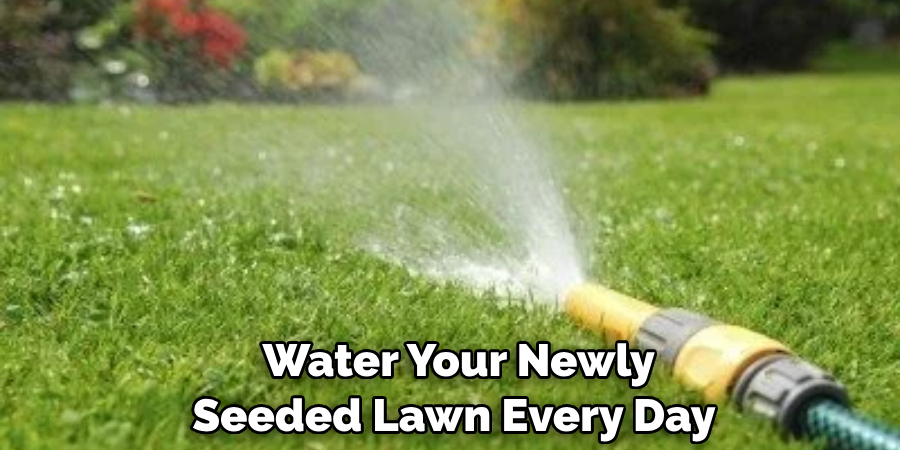
Step 7: Mow Properly
When mowing, be sure to use a sharp blade as this will ensure a clean cut which helps promote healthier growth. Also, make sure not to mow too short, as this can cause the grass to become dry and more susceptible to damage. Maintain a slightly higher mowing height to keep the grass strong and healthy.
Step 8: Aerate
Aerating your lawn will help improve drainage and allow air, water, and nutrients to reach the roots of the grass for healthier growth. You can do this by using a garden fork or aerator tool that you’ll find in most home improvement stores. Another great tip is to aerate your lawn twice a year.
Step 9: Weed Control
Weeds are one of the main culprits of lawn damage caused by rabbits, so it’s important to control them before they take over! Use an appropriate weed killer formulated for lawn use and follow all instructions carefully. Be Careful not to damage the grass in the process.
Step 10: Protect Your Lawn
One of the best ways to prevent future damage caused by rabbits is to protect your lawn with a fence. Rabbit fencing comes in various shapes and sizes, so you’ll surely find one that suits your needs. Remember, a well-protected lawn is less likely to be damaged, so it’s an important step in the repair process.
Following these ten steps will help restore your lawn back to its former glory after being damaged by rabbits. It may take some time, but with patience and dedication, you can have that perfectly manicured lawn again in no time!
5 Additional Tips and Tricks
1. Effectively discourage rabbits from entering your lawn by installing a fence. It should be at least 2 feet high and buried 6 inches into the ground, as rabbits can easily jump over fences less than 2 feet tall.
2. If you have existing rabbit damage, cut the affected grass with a sharp, clean scythe or lawn mower so that it is approximately one inch tall. This will help to remove any dead material and encourage new growth.
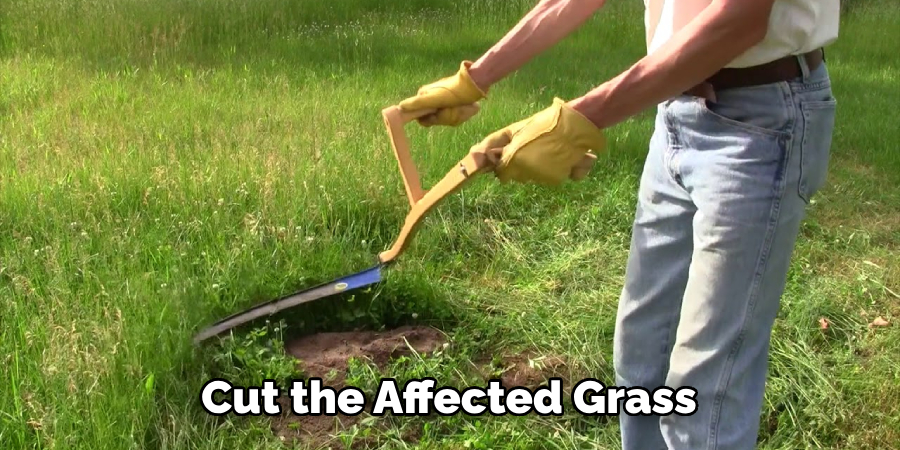
3. Re-seed the damaged area of your lawn with a mixture of shade-tolerant grass seeds suited to your region’s climate and soil types. Follow package instructions when applying fertilizer or other treatments for optimum results.
4. Water the newly seeded areas of your lawn frequently, keeping the soil moist for two to three weeks so the newly established grasses can take root.
5. Monitor your repaired lawn regularly and address any new damage as soon as possible to prevent further destruction by rabbits. Consider using traps or repellents to control your yard’s rabbit activity.
By following these tips and tricks, you will be well on your way to repairing your garden due to rabbit damage and creating a lush, healthy piece of land!
5 Things You Should Avoid
1. Avoid using chemical fertilizers, as rabbits are attracted to the smell of ammonia in many traditional fertilizer products.
2. Don’t over-water the lawn, as this can cause shallow roots that will be more susceptible to damage from foraging rabbits.
3. Don’t let the grass grow longer than two inches high, making it easier for rabbits to hide and nibble away at your garden without detection.
4. Do not use rabbit traps or repellents near areas where children or pets may play or feed, as they could be harmed by them if left unattended.
5. Avoid planting shrubs and bushes on the edges of your yard, as these provide a natural hiding spot for rabbits and can attract them to your lawn. By keeping these areas clear, you can better monitor rabbit activity in your yard and act quickly when necessary.
By using these tips, you’ll be well on the way to repairing the damage caused by rabbits! With proper care and maintenance, your lawn will be lush and healthy once more!
How Can You Identify Rabbit Damage?
1. Look for holes in the ground or patches of upturned soil caused by rabbits digging to find food and shelter.
2. Check plants and grasses for bite marks, as rabbits often feed on leaves and stems.
3. Observe any changes in the growth patterns of your lawn, such as thinning grass or dead spots where nothing is growing due to rabbit activity.
4. Watch for tracks left behind by rabbits that have been hopping through your yard at night, usually with visible footprints and tail drag marks left behind in the dirt or snow.
By identifying areas affected by rabbit damage, you can accurately repair them without wasting time or resources! Plus, a quick intervention can help to discourage rabbits from entering your lawn in the future.
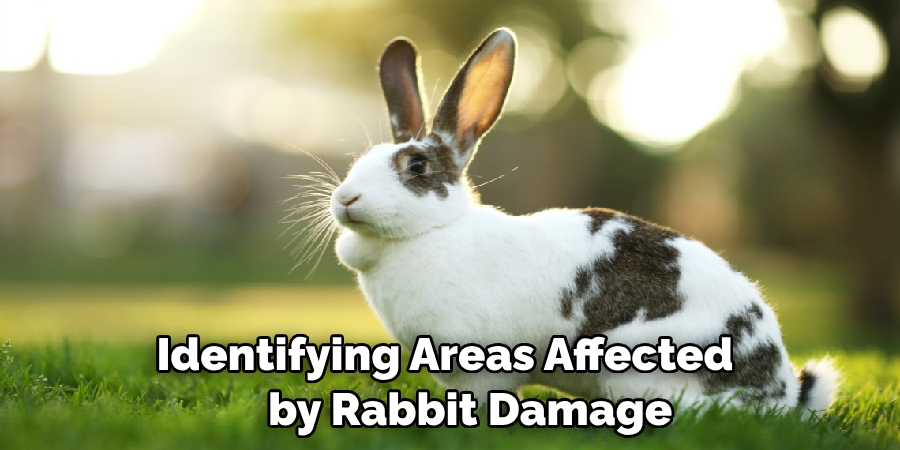
Does Rabbit Urine Damage Grass?
Yes, rabbit urine does damage grass. Rabbit urine is high in nitrogen and phosphorus, which can cause lawns to become yellow and patchy. When rabbits urinate on the grass, it causes the soil pH levels to drop, making it difficult for the grass to take up nutrients.
To protect your lawn from this kind of damage, be sure to regularly monitor it for signs of rabbit activity and promptly address any changes you observe. Also, make sure to keep the area well-fertilized so that any damaged patches can recover quickly.
Lastly, consider installing a fence around your garden or using repellents such as fox or coyote urine to discourage rabbits from entering your yard.
With these measures in place, you should have a healthy lawn free of rabbit damage in no time!!
Conclusion
In conclusion, it is vital to repair your lawn if you have had damage from rabbits. Ensuring that the lawn is properly reseeded and fertilized is essential to see positive results. You can use various methods to protect your lawn from further bunny damage, such as a motion-activated deterrent device or fencing around vulnerable areas.
In the long run, a great way to deter rabbits is by focusing on keeping their natural habitat healthy. Keep bushes trimmed back and remove any places they could hide out when threatened, like tall grass and rock piles.
The article on how to repair lawn damaged by rabbits has been helpful! With the proper steps taken, you will be sure to have a beautiful and healthy lawn in no time at all. Best of luck with restoring your yard!

